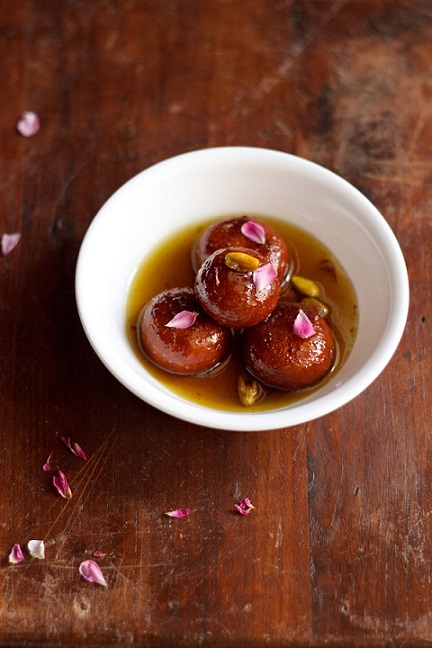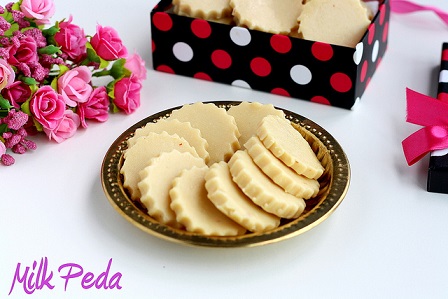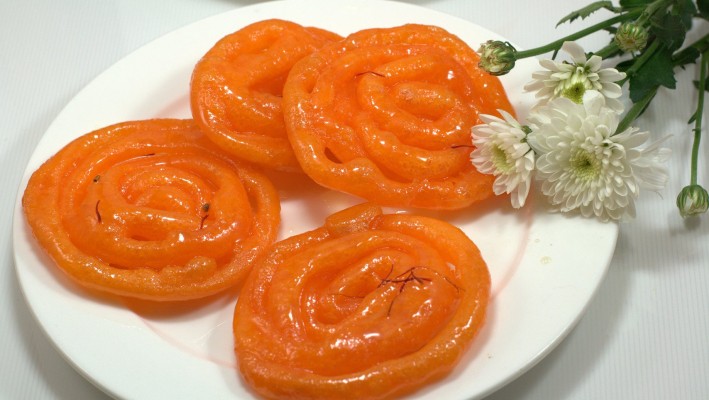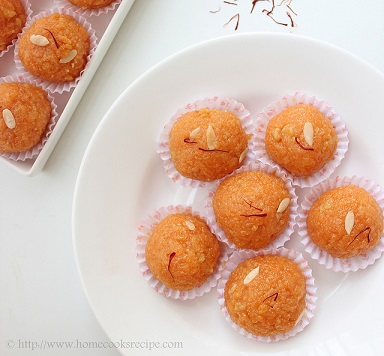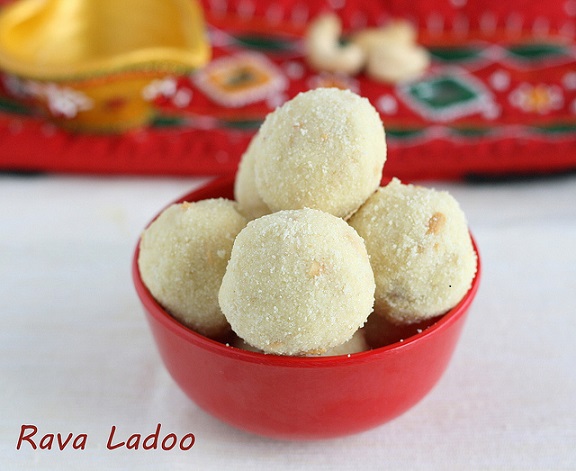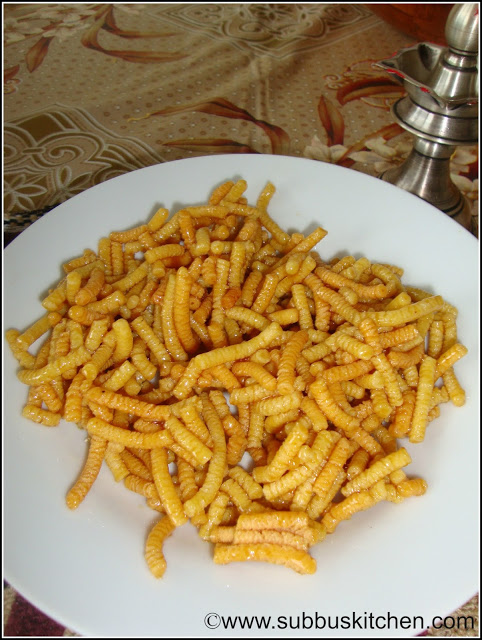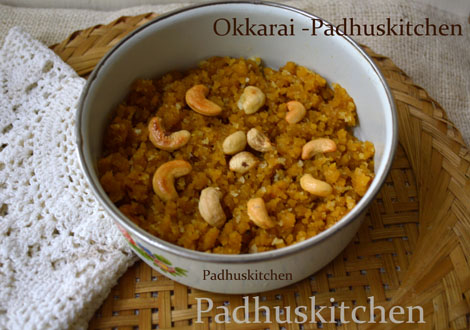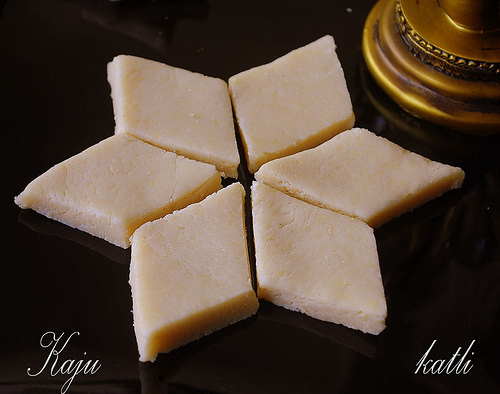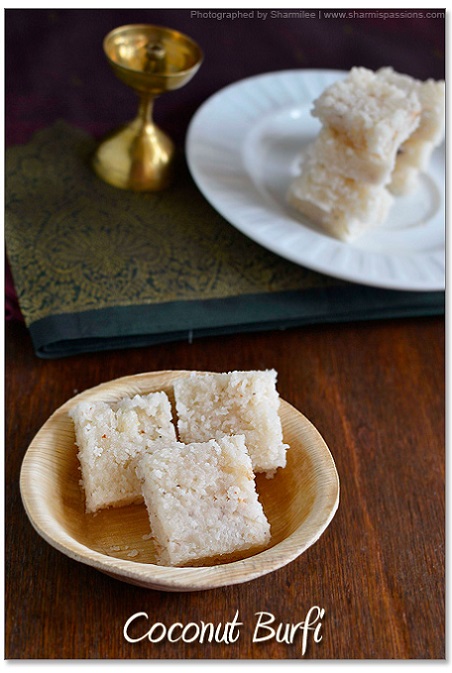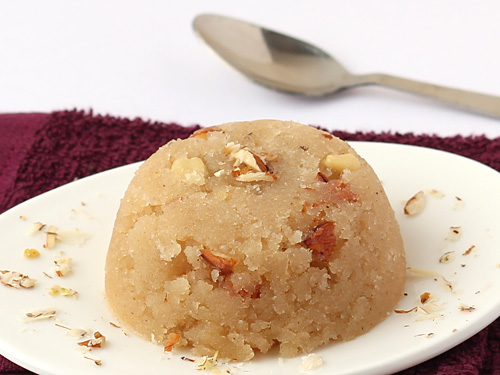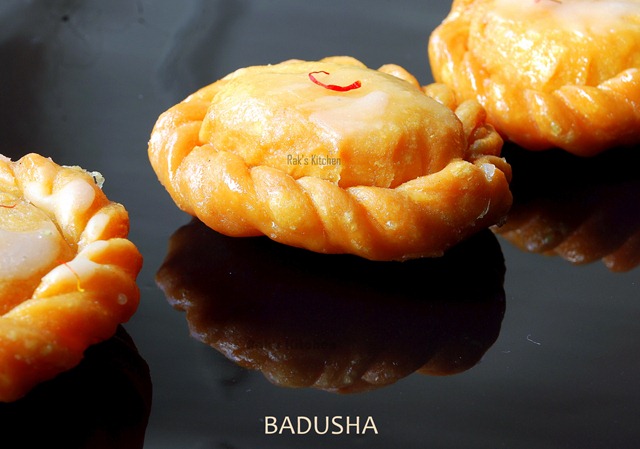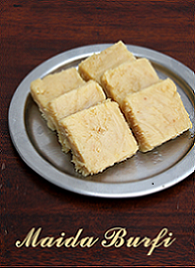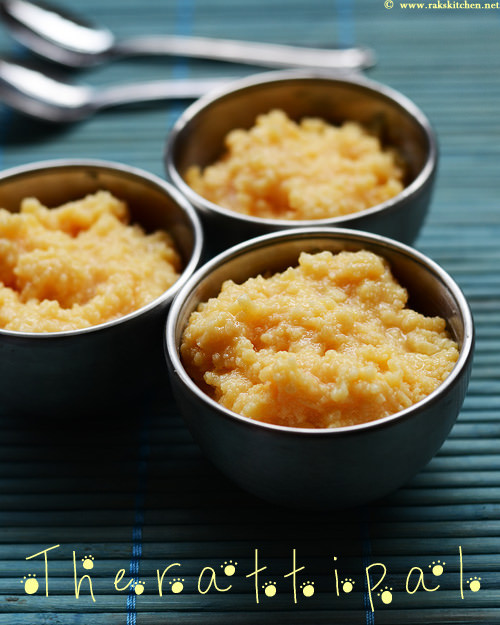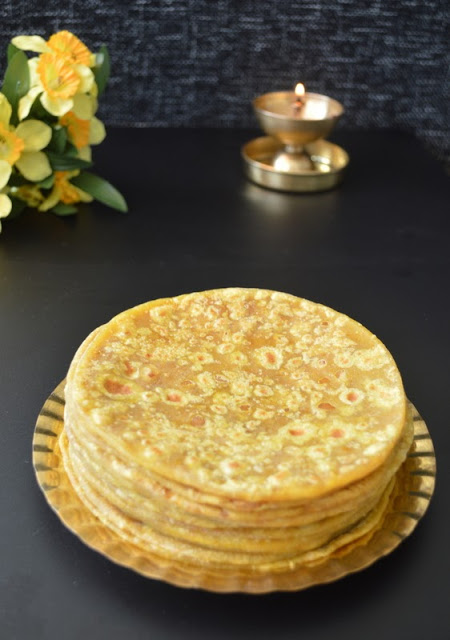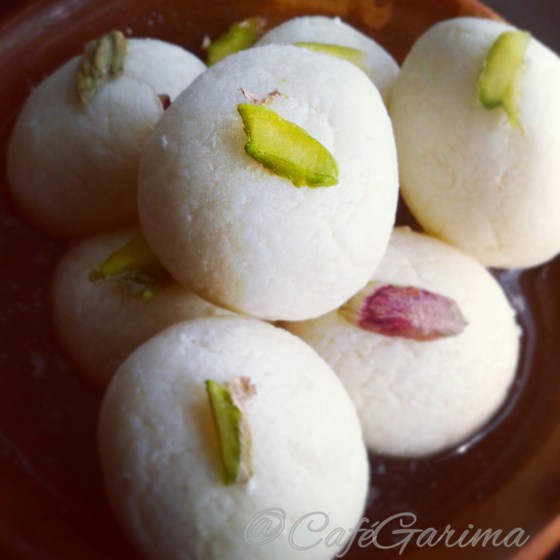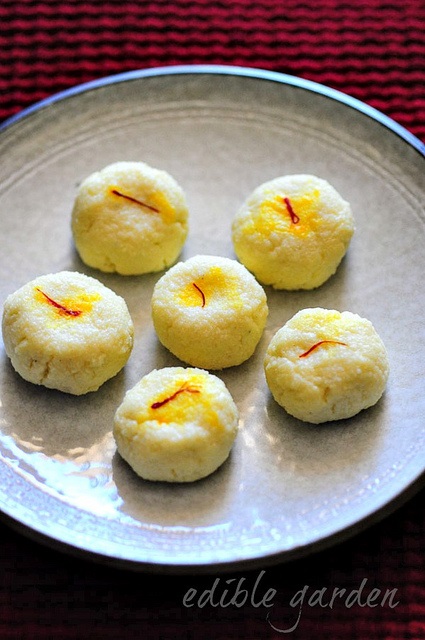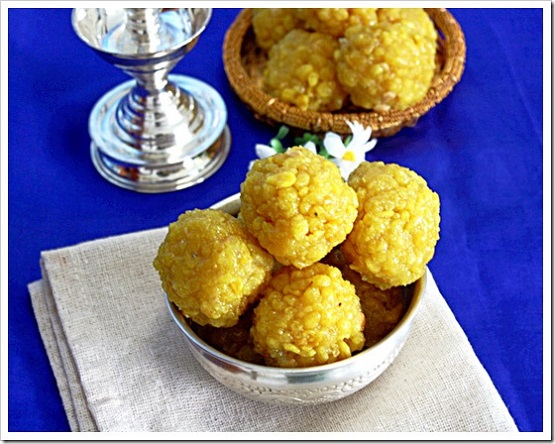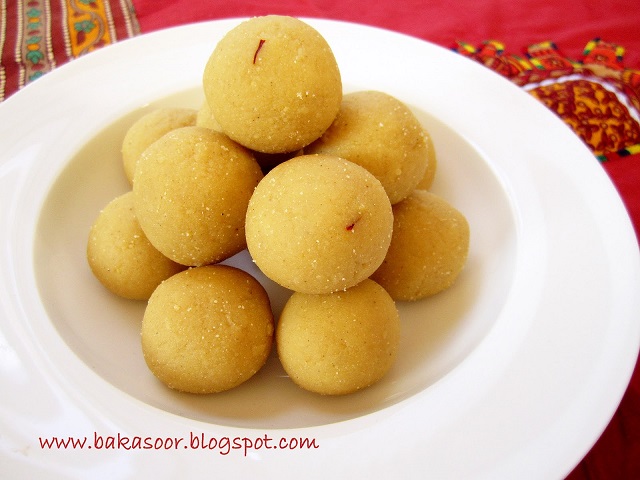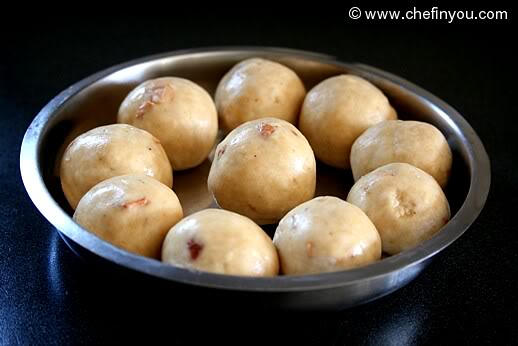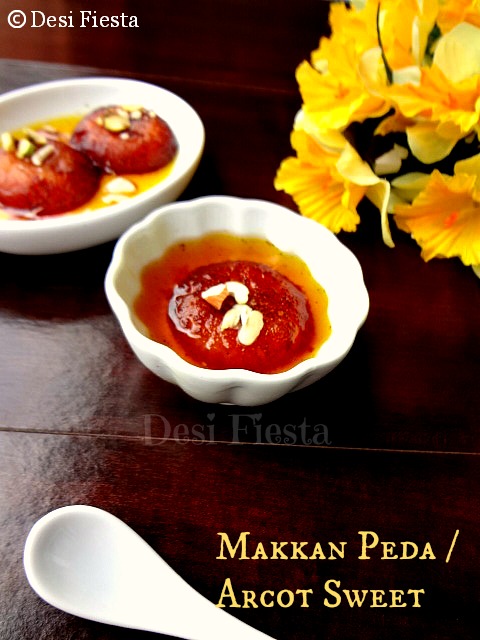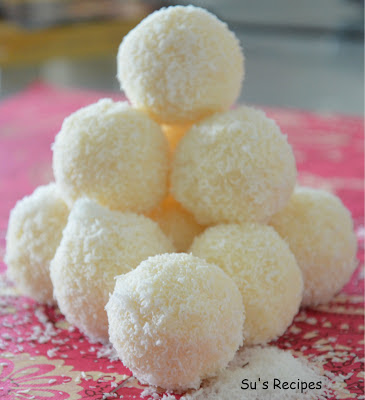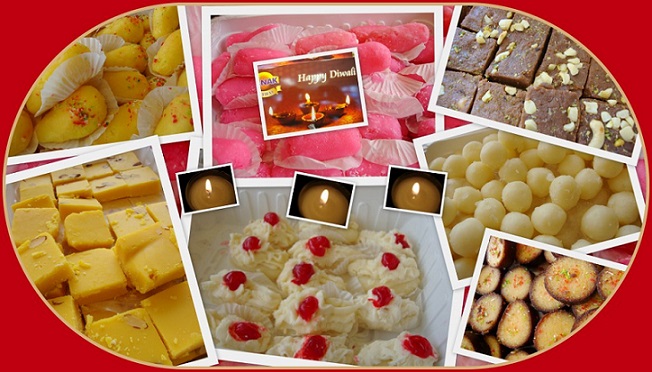
With Diwali around the corner, everyone would have started preparing sweetmeats by now. Along with the colorful Diyas, rangolis, fire crackers, and new dresses, sweets have a special place in the celebrations. Here are 25 traditional Diwali sweets, handpicked from across various Indian cuisines, to make your Diwali sweeter and more special…
25 Must Try Diwali Delicacies
1. Gulab Jamun:
Deep-fried golden fritters soaked in sugar solution flavored with a little saffron and cardamom! Serve hot with a scoop of vanilla or caramel flavored ice cream for a twist!
Milk Peda – Doodh Peda:
These simple, milk rich delicacies come in assorted flavors, including chocolate, pista, and pineapple. However, the tastiest is the basic one with just milk, ghee, and sugar mixed to perfection.
Jalebi:
The deep-fried, spiral shaped devilishly lip smacking delicacies dipped in a thin sugar syurp…. A mere look at these pretzel look alike sweets fills your mouth with water!
Motichoor Laddu:
The orange hued dessert gets its name from the collection of small bead like balls. Make sure you use fresh clarified butter for frying the motis. The consistency of suagr syrup is equally important to get the melt in mouth softness.
Rava Laddoo:
Prepared using cream of wheat or semolina, this particular recipe from Jayshri’s Kitchen is quite easy to prepare. You can sprinkle a little warm milk if you are not able to shape the mixture into balls.
Manoharam:
A traditional Diwali dessert from the kitchens of Tamil Iyers, it is crispy churros like fingers prepared using a mixture of rice and moong dal flours. Jaggery is used to render a delicate sweetness.
Okkarai:
Prepared using gram dhal, this one is traditionally prepared in the households of Tamil Nadu, particularly in and around Tirunelveli. You need to keep stirring the mixture, adding clarified butter every now and then, to ensure that the mixture does not stick to the bottom.
Kaju Katli:
Prepared using cashews, this is perhaps one of the tastiest traditional Diwali sweets. Quite easy to make, it makes uses of just cashews, sugar, water, and a little milk. Just 30 minutes – that is what you need to prepare this delicacy.
Mysore Pak:
Roasted Bengal gram flour is mixed with clarified butter before cooking on medium to high heat to perfection. There are quite a handful of variations you can try here. Those who want a lower calorie dessert can try using flavorless cooking oil in the place of clarified butter.
Seven Cup Burfi:
This looks similar to Mysore Pak, but is slightly harder. The measurement of the ingredients totals to seven and hence the name. Make sure you are using fresh coconut for the fluffiest burfi.
Coconut Burfi:
You can use desiccated as well as freshly grated coconut, with the later one giving you a melt-in mouth fudge. Using milk could cut down the shelf-life, but this burfi tastes its best when prepared using milk and fresh clarified butter.
Carrot Halwa:
There are two versions of this simple dessert – one with khoya and other without. Both taste equally good. This one given below does not use khoya.
Sooji Ka Halwa:
Please do not confuse this with Rawa Kesari. There is a difference in the preparation. Prepared by roasting semolina in clarified butter and flavoring it with cardamom and saffron, this is an all-time welcome treat for the sweet craving taste buds.
Badhusha:
Traditionally prepared using all-purpose flour, this is yet again a deep-fried Diwali favorite in Tamil Nadu. Check for the consistency of the sugar syrup. Also, please be careful while adding cooking soda as even a little overdose could put all your efforts at waste.
Maida Burfi:
This is a little tricky fudge, but if you get the single thread consistency of the sugar right, then it could be the easiest Diwali sweet. Transform it into a chocolate burfi by mixing in unsweetened cocoa powder or give it the color and flavor of pista by adding green food color and pista flavoring. The recipe is versatile; so modify it to meet your palate requirements.
Pal Therattipal:
An awesome recipe from the traditional kitchens of Tamil Brahmins, this is prepared traditionally using pure milk, sugar, and ghee. This particular recipe takes an instant twist on the classical variant without compromising on the taste of the dish.
Puran Poli:
A simple, yet versatile recipe, it is quite easy to modify the filling as your needs. Called also as Obattu and Poli, it can be prepared either using all purpose flour or whole wheat flour. Make sure you are serving this hot along with clarified butter.
Jangri:
This one looks quite similar to Jalebi, that is posted up. They just look similar, but differ in all other aspects including the ingredients used, texture, and taste. Add a twist to the classical recipe by adding a flavor of your choice to the batter.
Rasgulla:
Super soft, spongy, creamy white balls dripping sugar solution – that is what rasgullas are! Hailing from the kitchens of West Bengal, these are totally non-fried. Milk is first curdled to prepare paneer. This paneer is then used to prepare rasgullas. While you could buy paneer from a departmental store, homemade one will ensure that your rasgullas are really soft.
Sandesh:
This is yet another traditional Bengali sweet served quite often during Deepavali. Prepared using paneer, it is as soft as Rasgulla. Roast the saffron on gentle flame and crush it before dissolving in milk to ensure even consistency.
Boondi Laddu:
This one takes a slight twist on Motichoor laddu. Bengal gram flour is prepared into a thin batter. These are then deep-fried in clarified butter to perfection by shaping the batter into small bead like balls. The fried balls are soaked in cardamom and edible camphor flavored single thread sugar solution and then shaped into balls. It is a little tough to get the consistency correct, but each second spent on this recipe is worth the effort.
Rava Besan Laddu:
A mind-boggling twist on the classical besan laddu, the infusion of semolina renders a slight crunch to the otherwise melt in mouth delicacy. Add a handful of roasted and powdered almonds to the mixture to add richness to the delicacy.
Maaladdu:
Prepared using fried gram dal, you find this even as a part of traditional Tamil weddings. Quite a simple recipe, the classical recipe calls for the use of just three ingredients –fried gram, sugar, and clarified butter. You can pound roasted cashews and add to the mixture and sprinkle a little milk while shaping the balls to cut down the use of clarified butter.
Makkan Peda:
The Arcot version of this peda is more in vogue. Prepared using khoya or mawa and stuffed with roasted nut slices, this one looks similar to Gulab Jamun. You can even use an instant Gulab Jamun mix to prepare this mouthwatering Diwali dessert.
Coconut Laddu:
If you have plenty of desiccated coconut left in your kitchen cabinet, then this dessert could be your choice for this Diwali. Bring condensed milk as well as the coconut flakes to room temperature before placing the mixture atop the stovetop. You can even use freshly grated coconut. If you are using fresh coconut, add it to the mixer and give a twist so that it will be easier for you to achieve the desired consistency quicker.
Gone are those days when grandmothers used to start preparing the sweetmeats way before Diwali. The trend – rush to your nearest sweet shops and buy your favorite one! This time, make a change! Try preparing one from these traditional Diwali sweets and you are sure to be adored by your family and friends!
Happy Diwali!





